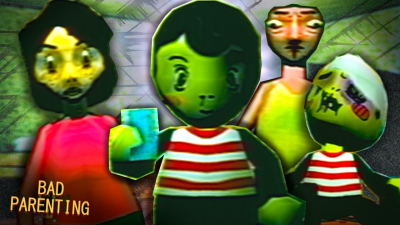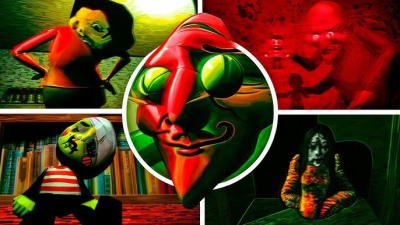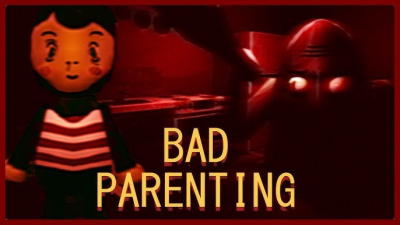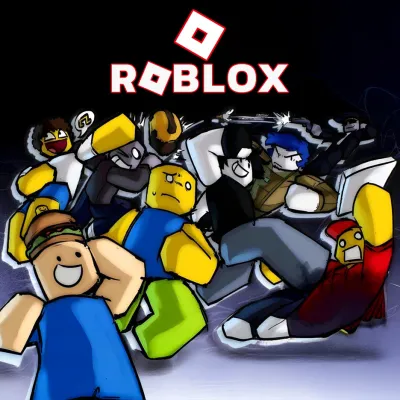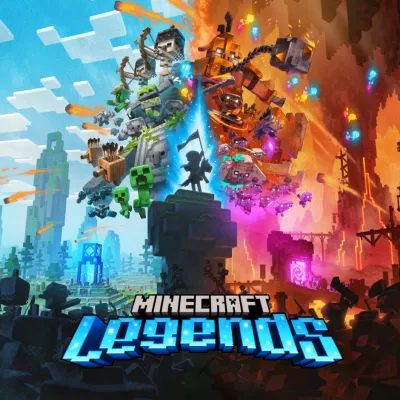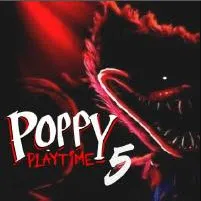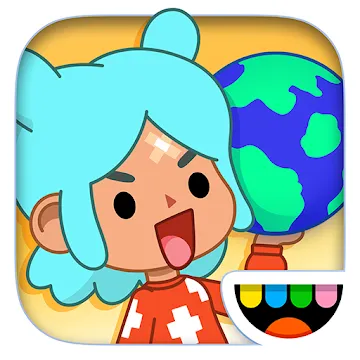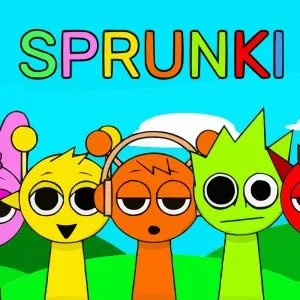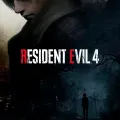Bad Parenting
I was intrigued by the title "Bad Parenting 1: Mr. Red Face" from the moment I first encountered it. The game promised an experience laced with wicked humor and unpredictable scenarios. As I immersed myself in its eccentric world, I quickly discovered that this was not your standard parenting simulation. Instead, it was an unorthodox romp through the modern misadventures of parenting, imbued with a unique narrative that defies everyday expectations. My journey as a player soon turned into an exploration of how far the boundaries of conventional storytelling could be pushed, all while retaining a sense of playful irreverence.
Diving Into Offbeat Mechanics
The game’s mechanics immediately grabbed my attention. The core gameplay loop involved managing chaotic situations with unconventional methods that kept me constantly on my toes. Instead of following predictable routines, I had to improvise and reassess my strategies several times during a session. Every decision felt like it carried significant weight, not in a traditional sense, but as it reflected the quirky morality at the heart of the game. The controls were responsive, and mastering the subtle intricacies of character interaction provided a sense of empowerment alongside moments of comic relief.
Experiencing the Unusual Narrative
Narrative depth in "Bad Parenting 1: Mr. Red Face" is a journey into the absurd. I encountered scenarios that oscillated quickly between hilarity and profound societal commentary. Each chapter worked like a short story, featuring twists that challenged my preconceptions about responsibilities and relationships. I found myself both chuckling at the irreverent humor and pausing to reflect on the subtle critiques of modern life that the narrative suggested. Dialogue delivery was pitch-perfect and managed to evoke a range of emotions, making the storyline as dynamic as it was unpredictable.
Absorbing the Aesthetic Flavor
The game’s visual presentation is as unconventional as its core premise. I was taken aback by the bold color palette and surreal environments that defined each level. Instead of aiming for hyper-realistic graphics, the designers embraced a caricatured art style that underscored the game's satirical tone. Every scene seemed carefully crafted to evoke an emotional response—ranging from amusement to mild shock—by playing with scale, perspective, and exaggerated character features. The art direction felt deliberate, reminding me that the game was more about narrative expression than visual verisimilitude.
Immersing in a Unique Soundtrack
The audio design was another element that stuck with me long after I put the controller down. The soundtrack comprised a series of eclectic tunes that accentuated the off-kilter nature of the storyline. I noticed the clever use of sound effects that emphasized the chaotic nature of each challenge, sometimes with a playful twist. Whether it was a sudden burst of unconventional percussion during a tense moment or a whimsical melody that accompanied a surprisingly emotional scene, the music reinforced the game’s blend of humor and pathos. The soundscapes also served to heighten the bizarre atmosphere, melding seamlessly with the visual eccentricities on display.
Engaging Puzzle and Challenge Structures
As the levels progressed, I found that each scenario presented a puzzle of sorts—requiring both strategic foresight and an understanding of the game’s quirky rules. Instead of handing out a clear set of instructions, the game forced me to explore and experiment. It was a delightful puzzle, where conventional solutions were often turned on their head. In one memorable sequence, I had to coordinate various elements of a chaotic household, and my usual approaches were useless. Rather, I had to trust my instincts and embrace the game’s fundamental unreliability, which in turn led to some of the most rewarding eureka moments I’ve experienced in gaming.
Interacting With Outlandish Characters
The characters in this game were far from ordinary. Interacting with them was like peering into a mirror that reflected our own absurdities back at us. Mr. Red Face, who at first glance appeared to be nothing more than a caricature, gradually revealed layers of complexity as the narrative unfolded. Each supporting character brought their own idiosyncrasies to the table, contributing to a tapestry of interactions that were as often hilarious as they were surprisingly thoughtful. I found that the dialogue, with its rapid-fire wit and surprising emotional weight, was a testament to the game’s commitment to character development—even in a context that frequently veered into the outrageous.
Mastering the Intuitive Interface
The user interface was another area where I noticed a clear evolution in game design. The controls were intuitive, and learning the intricacies of the menu system took only a few trials. I appreciated the minimal clutter on the screen, which allowed me to focus on the immersive gameplay without unnecessary distractions. Even though the game challenged conventional parenting simulations, it managed to keep its technical aspects accessible without oversimplifying the overall experience. The layout was neat and functional, revealing a thoughtful balance between simplicity and the need for a richer interactive element.
Exploring the Role of Satire
Satire is woven intricately throughout "Bad Parenting 1: Mr. Red Face". I found that the game could be both outrageously funny and incisively critical at the same time. It satirized everyday life and modern society with a playful yet pointed approach. During my playthrough, I was constantly reminded of the absurdities that can infiltrate even the most mundane aspects of daily routines. This layer of commentary not only engaged me as a player but also sparked intermittent introspection about the broader dynamics of familial and societal roles. I felt as though I was watching a dark comedy unfold before my eyes, with every scene deliberately designed to challenge the norm.
Balancing Humor With Deep Undertones
It wasn’t only the satirical bite that kept me glued, but also the way humor was interlaced with moments of sincere emotional exploration. There were sequences filled with absurd tasks that at first made me laugh out loud, only to be followed by hints of genuine struggle and responsibility. This duality struck a chord with me; even though the situations were surreal, they echoed familiar conflicts regarding expectations in life. I especially enjoyed the unexpected ways in which humor morphed into poignant reflections on the nature of care, expectations, and the unpredictable fallout of seemingly careless decisions.
Appreciating the Craft of Level Design
The spatial layout of each level was designed to reinforce the concept of unpredictability. I remember wandering through meticulously designed environments where every corner promised a new surprise. The levels were a mix of open, exploratory worlds and tightly confined spaces that heightened a sense of impending chaos. I found that this contrast not only kept the gameplay fresh but also symbolized the unpredictable highs and lows of parenting mishaps. The creative placement of interactive elements often required me to think outside the box, merging spatial awareness with a dash of spontaneity—the very essence of what this game celebrated with its structure.
Embracing the Unconventional Replayability
One of the aspects that increased my engagement was the sheer replayability derived from the game’s non-linear challenges. There were moments when my choices would drastically alter the gameplay experience in subsequent attempts. What truly captivated me was the idea that every playthrough could introduce a different challenge or narrative twist, compelling me to explore alternate paths and strategies. I found that this dynamic environment allowed the game to remain fresh even after several hours of play. Each replay wasn’t simply a repetition; it was an opportunity to uncover something new about the world and its multifaceted personas.
Assessing the Depth of Character Interaction
The interactions with characters, even those regarded as secondary, demonstrated a surprising depth that drew me further into the story. I observed that every conversation, every exchanged line of dialogue, was meticulously crafted to magnify the game’s underlying themes. At times, I even questioned whether the humorous chaos masked a more somber perspective on relationships and personal growth. The game’s design cleverly leveraged these interactions to make me think about the implications of my choices. Understanding that every dialogue tree had repercussions—even if humorous in nature—added a layer of complexity that elevated the overall experience beyond simple entertainment.
Reflecting on Personal Growth Through In-Game Challenges
Throughout my journey in the game, I noticed how the various challenges subtly pushed me to reassess my own approaches to problem-solving. The game’s unconventional challenges encouraged me to experiment and embrace uncertainty. I came to appreciate that, in facing unpredictable scenarios, there was a valuable exercise in letting go of preconceived notions and trusting instinct. Each level served as a metaphor for personal growth, where mistakes could lead to unexpected lessons. Handling the absurdity of each situation forced me to engage in critical thinking, ultimately enhancing my appreciation for the depth hidden within the seemingly chaotic gameplay.
Exploring the Integration of Social Commentary
In "Bad Parenting 1: Mr. Red Face", social commentary is seamlessly integrated into the gameplay and narrative. I found that what might have initially appeared as sheer absurdity actually carried significant undertones about societal expectations and the shifting paradigms of modern family life. The design choices, from dialogue to level construction, reflected recurring motifs about the pressures and responsibilities that often go unspoken in everyday life. I couldn’t help but notice how the unconventional portrayal of events paralleled real-world scenarios, prompting me to identify broader cultural narratives that resonated deeply with my own observations about contemporary society.
Immersing in the Unexpected Emotional Cadence
The game expertly meandered between sheer levity and subtle emotional beats. I experienced moments of unbridled hilarity that were interspersed with quieter, introspective pauses. This unexpected emotional cadence created a vibrant tapestry of feelings, where every twist of the narrative evoked a mix of amusement and thoughtful reflection. I found myself not only laughing at the absurd undertakings of the characters but also experiencing quiet moments of empathy as I watched them navigate complex waters. Such an emotional rollercoaster is rarely found in games that lean heavily on satire, and it is one of the aspects that solidified my attachment to the experience.
Understanding the Unique Challenge of Non-Traditional Themes
This game is a refreshing divergence from conventional titles where the themes are often predictable and formulaic. I appreciated the courage behind presenting a narrative that confronted traditional ideas about responsibility and maturity in an unorthodox setting. Playing through "Bad Parenting 1: Mr. Red Face" demanded that I let go of expectations and accept the unconventional plot twists as part of its charm. The game required a flexible mindset and an openness to explore humor that was both dark and introspective. I soon realized that the deliberate departure from traditional narratives was a testament to the creative freedom that the developers embraced, making each new situation a fresh challenge to be deciphered.
Revealing Layers Through Interactive Diversity
One of the most impressive facets of the game was its use of interactive diversity to deliver layers of meaning. Every character encounter and environmental puzzle presented a chance to peel back another layer of the game’s complex narrative. As I ventured deeper into the realms of the game, every decision felt meaningful—not necessarily in a way that solved the next puzzle, but in the way it connected me emotionally and philosophically to the experience. The diversity in interactions meant that I had to adapt continuously, balancing strategic play with a willingness to be surprised by the narrative’s shifts. Such design intricacies are rare and provided a sense of unpredictability that kept me thoroughly engaged from start to finish.
Delving Into the Creative Risk-Taking
I found that "Bad Parenting 1: Mr. Red Face" was particularly daring in its creative choices. Every element, from the narrative twists to the gameplay mechanics, seemed to be the result of bold experimentation. The game dared to push the envelope, presenting themes and mechanics that diverged significantly from the conventional. This creative risk-taking resonated with my own desire for novel experiences in gaming. I admired the developers' willingness to blend humor, tension, and emotion while interweaving biting social commentary into the very fabric of the game. This balance is not easily achieved, and witnessing it firsthand left an indelible impression on my overall gaming experience.
Observing the Interplay Between Order and Chaos
Throughout the game, I noticed a fascinating interplay between order and chaos that formed the backbone of its technical and narrative design. While the overall structure of the game adhered to certain logical progressions, the events within each segment frequently veered into the unpredictable. This dual dynamic allowed for moments of calm strategy followed by bursts of frantic energy. I found the transition between these states seamless and cleverly orchestrated, a testament to the developers’ understanding of pacing and tension. Experiencing this oscillation not only kept me engaged but also deepened my appreciation for the game's internal logic, even while it entertained with erratic behavior.
Evaluating the Impact of Play on My Perspective
From the moment I began playing "Bad Parenting 1: Mr. Red Face", I was drawn into its uniquely crafted world—a world that balanced humor with a nuanced look at personal and societal challenges. Engaging with its multifaceted design made me reflect on how unconventional storytelling can transform expectations around narrative and gameplay. The game was not simply about maneuvering through absurd tasks, but also about embracing the unpredictable nature of decision-making. Each moment of tension or laughter offered a glimpse into the creative process behind the scenes, urging me to look beyond the surface. My experience was enriched by these moments of introspection, bridging the gap between entertainment and thought-provoking art.
Pros
- Innovative narrative approach that keeps the gameplay unpredictable and engaging
- Responsive controls that make strategic improvisation a rewarding challenge
- Distinctive visual style that uses surreal environments to amplify the quirky tone
- Witty dialogue that cleverly integrates humor with deeper societal commentary
- Creative puzzle design that encourages experimenting with unorthodox solutions
- Eclectic soundtrack and sound design that perfectly underscore the chaotic energy
Cons
- Steep learning curve for new players due to unconventional mechanics
- Occasional pacing issues that can disrupt the flow of the narrative
- Complexity in gameplay that may overwhelm those accustomed to traditional parenting simulations
